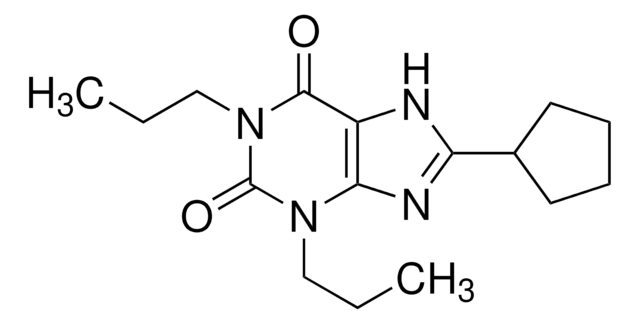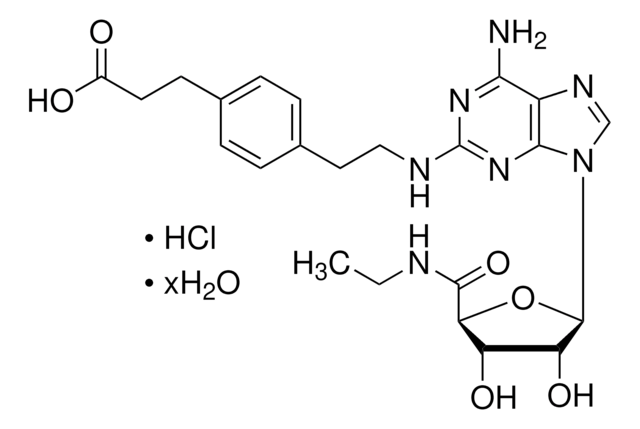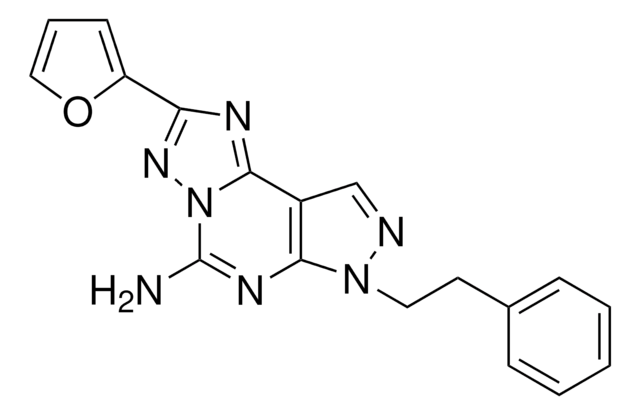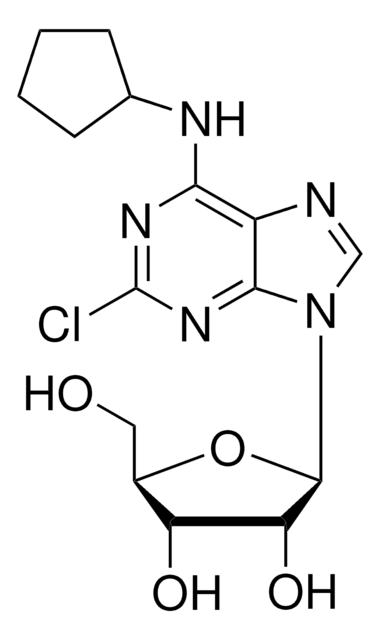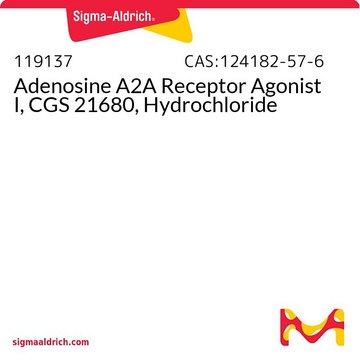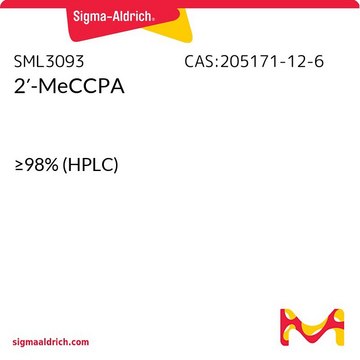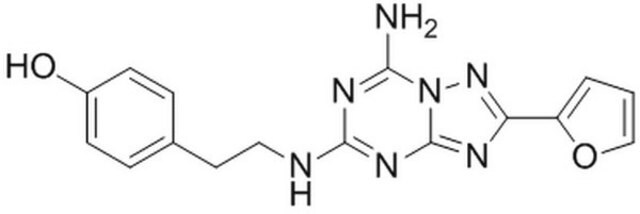D134
3,7-Dimethyl-1-propargylxanthine
≥98% (HPLC), powder
Synonym(s):
3,7-Dimethyl-1-(2-propynyl)xanthine, DMPX
About This Item
Recommended Products
Quality Level
Assay
≥98% (HPLC)
form
powder
color
white to beige
solubility
DMSO: 15 mg/mL, clear
SMILES string
CN1C(=O)N(CC#C)C(=O)c2c1ncn2C
InChI
1S/C10H10N4O2/c1-4-5-14-9(15)7-8(11-6-12(7)2)13(3)10(14)16/h1,6H,5H2,2-3H3
InChI key
IORPOFJLSIHJOG-UHFFFAOYSA-N
Gene Information
human ... ADORA2A(135) , ADORA2B(136)
rat ... Adora1(29290) , Adora2a(25369)
Looking for similar products? Visit Product Comparison Guide
Application
- to study its effects on potential modulation of motor output elicited by epidural spinal stimulation (ESS)
- to study the role of A2a receptor in elevating cyclic adenosine monophosphate (cAMP) levels
- to study its effects on the cell viability of human gastric cancer cell line
Biochem/physiol Actions
Signal Word
Warning
Hazard Statements
Precautionary Statements
Hazard Classifications
Eye Irrit. 2 - Skin Irrit. 2 - STOT SE 3
Target Organs
Respiratory system
Storage Class Code
11 - Combustible Solids
WGK
WGK 3
Personal Protective Equipment
Regulatory Listings
Regulatory Listings are mainly provided for chemical products. Only limited information can be provided here for non-chemical products. No entry means none of the components are listed. It is the user’s obligation to ensure the safe and legal use of the product.
JAN Code
D134-100MG:
D134-VAR:
D134-10MG:
D134-25MG:
D134-BULK:
Choose from one of the most recent versions:
Already Own This Product?
Find documentation for the products that you have recently purchased in the Document Library.
Our team of scientists has experience in all areas of research including Life Science, Material Science, Chemical Synthesis, Chromatography, Analytical and many others.
Contact Technical Service